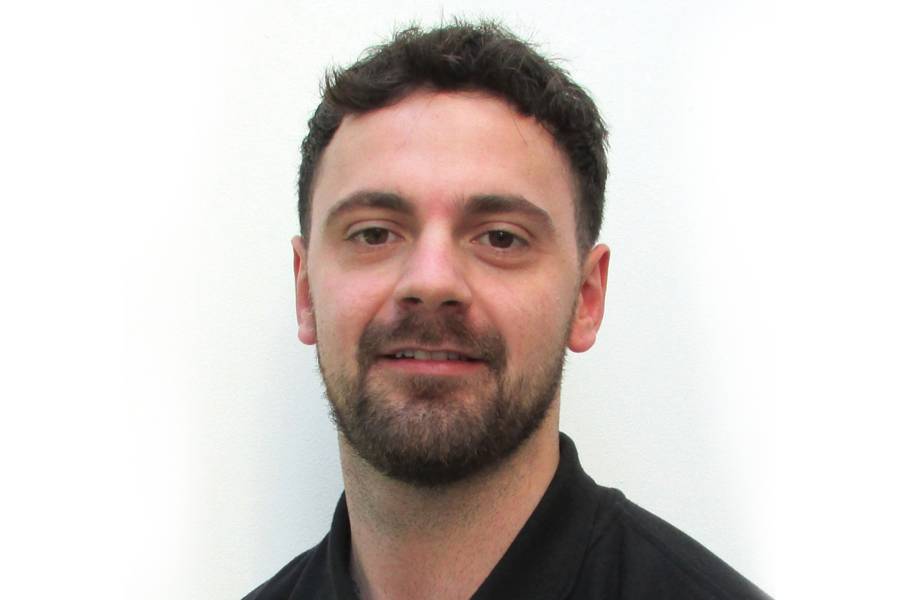Calcium Sulfate or anhydrite screeds have grown in popularity over the last decade as they can offer installation benefits over traditional sand:cement screeds.
Efficient to install, low cost, pumpable, self-levelling and offering minimal shrinkage, anhydrite screeds are perfect for domestic or commercial projects. Due to their “high flow” properties, they a regularly used to encapsulate wet fed or primary heating systems.
However, despite the numerous benefits associated with anhydrite screeds, fixers and installers need to be aware of potential problems. Bradley Cutts, ARDEX Group UK training and technical support manager, elaborates.
These types of screeds contain anhydrous (dry) calcium sulfate and aggregates instead of a cement-based binder. The binder comes as either an alpha hemi-hydrate (a stronger and harder crystalline form) or anhydrous calcium sulfate. When water is added the binders will form calcium sulfate dihydrate – more commonly known as gypsum. This reaction stops when the vast majority of the calcium sulfate binder is used up and is generally complete after a period of three to seven days, leaving the remaining water to evaporate through the surface of the screed.
Before laying onto calcium sulfate screeds, it is vital to ensure the moisture content is at the correct level for the required floor finish. Typical values for moisture sensitive floor finishes are less than 0.5% water by weight (Carbide Method or CM) or less than 75% relative humidity (RH) for 4 impermeable floors and less than 1% w/w for more permeable floors.
If fast-track tiling is required, one can use breathable floating uncoupling systems which can be used on screeds at 1.5% CM – where usually 0.5% CM is required.
Alternatively (providing confirmation is sought by the screed manufacturer and if present, the UFH system has been commissioned) you can use a liquid applied surface DPM system on anhydrite up to 87% RH, further reducing the drying time.
As a general rule of thumb, the drying time for a calcium sulfate screed, so the moisture content reaches 0.5% w/w, is approximately 1mm per day up to 40mm and two days per mm thereafter in ideal drying conditions (air temperature of 20°C with a relative humidity not greater than 65%). Drying times will be significantly increased for thicker screeds or those in poor drying conditions.
Accelerated drying of calcium sulfate screeds may be used once the screed is at least seven days old. It is usually at this point it can be recommended to commission any underfloor heating, after seeking guidance from the manufacturer. The system should be increased by approximately 5°C per day until the maximum required working temperature is reached or as per the underfloor heating manufacturer’s recommendations. This should be maintained for a minimum of one week, before being gradually reduced to around 15-20°C. Do not exceed a temperature of 55°C. Use of dehumidifiers will also help.
Before laying tiles or other finishes onto calcium sulfate screed, one of the most important tasks is the removal of laitance. Laitance is a weak layer of fine particles deposited on the surface of the screed as the anhydrite cures. This layer is too weak to tile onto and can also inhibit drying of the screed. Many of the failures we see are a result of improperly prepared surfaces – highlighting the importance of carrying out this step.
Laitance should be removed by light abrasion using a suitable sanding machine i.e. a rotary floor scarifier and a 60’s grit sandpaper. Any excess dust should be removed completely with a vacuum cleaner. Abrading the surface is best carried out 4-6 days after the application of the screed and can assist in the drying out process.
It is important to note that all anhydrite screeds require mechanical preparation prior to the use of any surface preparation material or tile adhesive. Low laitance, does not mean no laitance! Always expose the aggregate.
All traffic should be kept off the screed until it has hardened sufficiently in accordance with the screed manufacturer’s instructions and should always be protected from contamination and damage from other trades.
If not protected as the project progresses, it may result in the wearing or grinding down of the screed’s surface. If this does occur, then further surface treatment may be required. Moisture should also be avoided as any reintroduction of water can result in damage to the screed integrity. This may come from wet foot traffic or even wet trades, such as plastering.
Before tiling we would recommend applying a primer to the prepared screed surface before application of the tile adhesive. Priming creates an effective barrier between the screed and adhesive, and enhances product performance.
When selecting your tiling solution, consideration should be given to factors such as the tile type, intended use of the area and even proposed method of cleaning the floor whilst in service – i.e. how wet the finished floor may become and what are the risks associated with limited water penetration.
Waterproofing protection should always be considered where wet services can potentially re-wet the floor, and cause failure such as in utility rooms.
Once the floor is dry, prepared, and your solution identified, cement based, flexible adhesives are tried, tested and recommended, in line with industry classifications and standards. Your tile format and working conditions may also play a factor in adhesive selection i.e. PTB, standard setting or rapid setting for example.
When the adhesive is cured, the joints between the tiles should be filled with a suitable grout – please note that a minimum joint width of 3mm for floor tiling is recommended.
For ceramic tiling, movement joints will be required in these installations. Any movement joint, or joints likely to be subject to movement in the calcium sulfate screed, should coincide with the movement joints in the tile bed. Movement joints should be incorporated as outlined in British Standard BS 5385-3, 2014 clauses 6.8 and 7.1.6. For heated screeds, also refer to TTA’s technical document: Tiling to Calcium Sulfate-based Screeds
Last, but not least, before tiling onto calcium sulfate screeds we would always recommend getting professional technical advice from manufacturers to ensure your installations look great and last the test of time.
At BAL and ARDEX we can carry out professional, free moisture testing on all types of screeds, giving you a good indication whether the screed is ready to tile to.
03330 030 160
www.ardex.com









